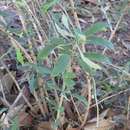Comments
provided by eFloras
A variable species said to have replaced
Berberis ceratophylla G. Don in Kashmir and Western Himalayas and itself to be replaced by
Berberis parkeriana Schneid. in the bordering areas of Kashmir and Pakistan. The varieties
subfascicularis Ahrendt and
subvirescens Ahrendt with shorter, 5-15-flowered inflorescences, racemose to subfascicled, seem to be only variants of the species, the former with leaves like the type variety but the latter with leaves dull greenish below. They are based on single gatherings,
Ludlow &
Sherriff 9105 (BM) and
Ludlow &
Sherriff 8095 (BM) respectively, collected from Kashmir.
A brown extract from its roots and lower parts of stem is called ‘Rasaunt’ and is mixed with water for use as cooling agent or tonic. It is also used as an eye lotion.
- license
- cc-by-nc-sa-3.0
- copyright
- Missouri Botanical Garden, 4344 Shaw Boulevard, St. Louis, MO, 63110 USA
Description
provided by eFloras
Shrub, 2-3(-4) m tall, erect or suberect, semideciduous; stem and branches pale, whitish to greyish, terete to subsulcate, glabrescent, younger ones obscurely to distinctly puberulous; internodes 1.5-3.5 cm long; spines (1-)3-fid, (6-)10-20 mm long, yellowish to straw-coloured. Leaves oblanceolate to oblong-obovate, (2-) 3-6 cm long, 6-12 mm broad, subsessile, usually conspicuously papillose, grey or white below, entire to 2-4 spinulose at the margins, acute to subacuminate, openly veined. Racemes (6-)10-25-flowered, 3-6(-7) cm long, rarely shorter and subfascicled (2-2.5 cm.). Flowers 6-8 mm across, usually pale-yellow; pedicels 6-12(-15) mm long, rarely longer, slender, thin, glabrous; bracts 2-2.5 mm. long. Prophylls c. 1 mm long, ovate, reddish. Outer sepals much smaller than the middle and inner sepals; inner sepals 4.5-5 mm long, 3 mm broad, obovate. Petals slightly shorter than the inner sepals, obovate, emarginate, with lanceolate basal glands. Stamens slightly shorter than petals, connectives produced or anthers apiculate. Ovules usually 4, shortly stipitate. Berries 7-8 mm long, c. 5 mm broad, ovoid or obovoid-subglobose, excluding 1 mm long style, blackish with heavy grey-white bloom; seeds 3-4 mm long.
- license
- cc-by-nc-sa-3.0
- copyright
- Missouri Botanical Garden, 4344 Shaw Boulevard, St. Louis, MO, 63110 USA
Distribution
provided by eFloras
Himalaya (Kashmir to Nepal).
- license
- cc-by-nc-sa-3.0
- copyright
- Missouri Botanical Garden, 4344 Shaw Boulevard, St. Louis, MO, 63110 USA
Distribution
provided by eFloras
Distribution: Kashmir, Pakistan and N. W. Himalayas.
- license
- cc-by-nc-sa-3.0
- copyright
- Missouri Botanical Garden, 4344 Shaw Boulevard, St. Louis, MO, 63110 USA
Berberis lycium: Brief Summary
provided by wikipedia EN
Berberis lycium, called the Indian lycium, Indian barberry, or boxthorn barberry, is a species of flowering plant in the family Berberidaceae. It is native to mountain slopes of the northwestern part of the Indian Subcontinent. A widespread species, its fruit, called kasmal, is edible and is eaten fresh, cooked, and preserved.
- license
- cc-by-sa-3.0
- copyright
- Wikipedia authors and editors

